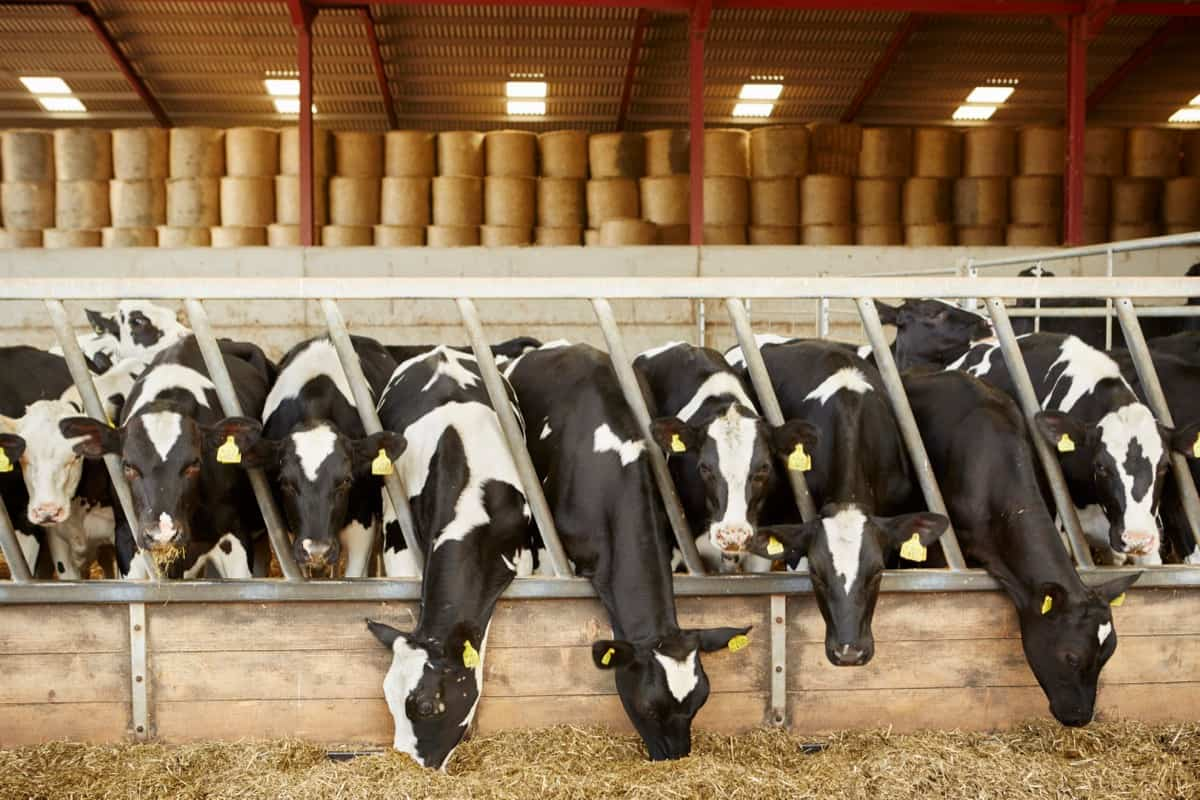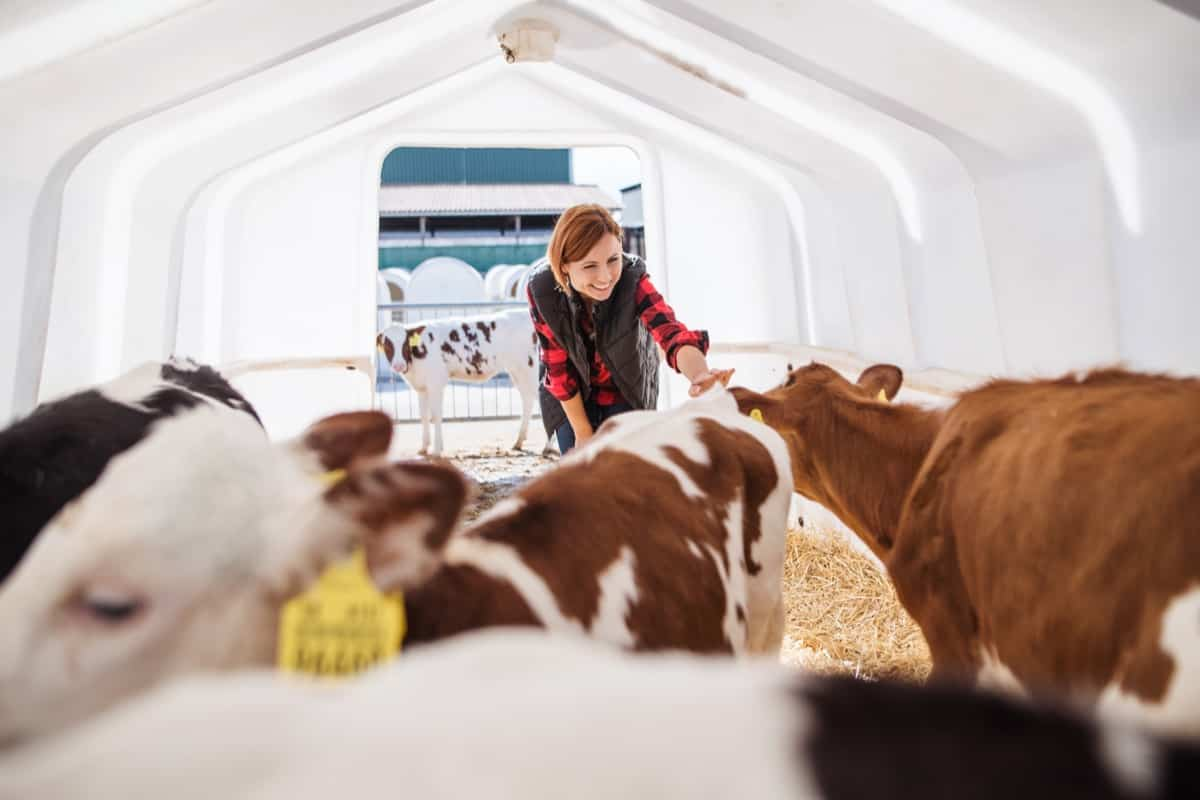The world of cattle breeding is waiting for you! Successful cow farming requires understanding the phases of cattle gestation and the calendar for cattle breeding. The gestation calendar for cattle serves as a road map for producers as they embark on the thrilling process of welcoming new calves into the world.

We’ll simplify the stages of cow gestation in this tutorial and give you a useful bovine gestation table so you can easily monitor and take care of the reproductive health of your herd. Together, we can ensure that your cattle are healthy and productive as we set out on this educational trip.
What is a Cattle Breeding Calendar?
Ranchers and farmers who raise animals need a Cattle Breeding Calendar. It is a systematic timetable that aids in the management and optimization of the cattle breeding process, guaranteeing the well-being and output of the herd. This calendar provides farmers with a road plan detailing important dates and chores associated with cattle reproduction.
Important Things Related to Cattle Gestation
- Duration: Cattle pregnancy typically lasts around nine months or about 280 days. Knowing when your cow was bred is essential to anticipate the calving date.
- Nutrition: Pregnant cows require proper nutrition. Feed them well-balanced diets to ensure the mother and calf’s health.
- Healthcare: Regular veterinary checkups are vital during gestation. Vaccinations, deworming, and other medical care help keep the cow and her calf healthy.
- Calving: Be prepared for calving. Make a safe and clean environment for the cow to give birth.
- Breeding: Choose the right time to breed your cattle and ensure proper mating to avoid complications during gestation.
- Observation: Keep a close eye on your pregnant cows. Monitor their behavior and health regularly to detect signs of distress or illness.
- Separation: It’s often a good idea to separate pregnant cows from the rest of the herd as they approach their due date. This reduces stress and minimizes the risk of injury to the expecting cow and her calf.
- Comfortable Housing: Provide comfortable and clean housing for pregnant cows. Adequate shelter and bedding are crucial, especially during harsh weather conditions.
- Record-Keeping: Maintain accurate records of each cow’s breeding date, expected calving date, and any health treatments given during gestation. This information is invaluable for managing your herd effectively.
- Calf Care: Be prepared to care for the newborn calf. This includes ensuring proper colostrum intake, vaccinations, and a clean environment.
- Breeding Plans: Develop a breeding plan that aligns with your cattle farming goals, whether it’s for beef or dairy production. Consider factors like genetics and breed selection.
- Culling Decisions: Evaluate the performance of cows during and after gestation. Make informed culling decisions based on fertility, health, and milk or meat production.
- Financial Planning: Calculate the costs of cattle gestation, including feed, veterinary care, and potential complications. Budget accordingly to ensure the profitability of your cattle farming operation.
In case you missed it: 10 Best Beef Cattle Breeds in the United States with Prices

Calving Date Calculator And Table
Farmers and ranchers can use a Calving Date Calculator to estimate when their cows or other livestock will give birth. It functions by factoring in the animal’s most recent breeding date and the average gestation duration for that species.
For instance, the gestation period in cows might vary somewhat, with an average of 283 days. The calculator is easy to use; enter the date of your cow’s most recent insemination or breeding, and it will predict when she should give birth. This information is essential for planning and preparation for farmers to be ready for the delivery and give the mother and newborn calf the necessary care.
| Month | Activity |
| January | Select breeding bulls |
| February | Begin cow body condition scoring |
| March | Start synchronization protocols |
| April | Estrous cycle monitoring |
| May | Artificial insemination (if needed) |
| June | Pregnancy diagnosis |
| July | Nutritional adjustment for pregnant cows |
| August | Continue monitoring pregnant cows |
| September | Prepare calving facilities |
| October | Calving season begins |
| November | Post-calving care |
| December | Evaluate the breeding season |
Cattle Gestation Period Calculator for Different Cattle Breeds
The Calving Gestation Period Calculator is an invaluable resource for cattle breeders seeking to forecast the due date of a pregnant cow. The amount of time a cow is pregnant, or the gestation period, differs based on the breed of cattle.
- Angus Cattle: Angus cows typically have a gestation period of about 283 days or 9.4 months.
- Hereford Cattle: Hereford cows usually have a slightly shorter gestation period of around 279 days or 9.3 months.
- Holstein Cattle: Holstein cows, known for their dairy production, also have a gestation period of about 279 days.
- Charolais Cattle: Charolais cows generally have a longer gestation period of approximately 292 days or 9.7 months.
- Limousin Cattle: Limousin cows typically have a gestation period of about 285 days or 9.5 months.
- Simmental Cattle: Simmental cows usually have a gestation period of around 285 to 290 days, averaging about 9.5 to 9.7 months.
- Black Angus vs. Red Angus: Interestingly, Black Angus and Red Angus cows have similar gestation periods of around 283 days, regardless of their coat color.
- Gelbvieh Cattle: Gelbvieh cows typically have a gestation period of about 280 to 285 days, or 9.3 to 9.5 months.
In case you missed it: Braford Cattle Breed: Origin, Characteristics, Price, Life Span, Appearance, and Temperament

FAQs Related to the Cattle Breeding Calendar
What is a Cattle Breeding Calendar?
A Cattle Breeding Calendar is a schedule that helps farmers plan when to breed their cows or bulls for optimal results.
Why is it Important to Follow a Breeding Calendar?
It helps ensure calves are born at the right time for the farm’s conditions, like avoiding harsh weather, and can optimize milk or meat production.
When Should I Start Using a Breeding Calendar?
Start planning a few months before you want the calves to be born.
How Do I Determine the Best Breeding Dates?
Consider factors like the cow’s age, health, and the breed. Consult with a veterinarian or cattle expert for guidance.
What are Some Common Breeding Methods?
Common methods include natural mating (bull and cow together), artificial insemination (using stored bull semen), and embryo transfer.
How Can I Track a Cow’s Heat Cycle for Breeding?
Look for signs like increased activity, mounting other cows, or clear vaginal discharge.
What Should I Do If a Cow Doesn’t Get Pregnant?
Consult a vet to identify potential issues and develop a new breeding plan.
Can I Use Technology for Better Breeding Management?
Apps and software can help track heat cycles and manage breeding records.
What’s the Ideal Calving Season for My Region?
It depends on your climate and resources. Consult with local agricultural extension services for advice.
Are There Any Health Precautions to Take During Breeding?
Ensure cows are healthy, vaccinated, and have a proper diet. Regular veterinary checkups are essential.
In case you missed it: Limousin Cattle Breed: Origin, Characteristics, Temperament, Pros and Cons

Conclusion
Ranchers should have the Cattle Breeding Calendar containing the Cattle Gestation Table and Stages. It aids in monitoring a cow’s about nine-month pregnancy, enabling appropriate planning and care. The table helps farmers and cattle by streamlining due dates and guaranteeing healthy calves.
- Feed Your Flock for Less: Top 10 Tips to Save on Chicken Feed
- Ultimate Guide to Ossabaw Island Hog: Breeding, Raising, Diet, and Care
- Hatching Answers: The Top 10 Reasons Your Chickens Aren’t Laying Eggs
- Eggs and Economics: Breaking Down the Cost of Raising Backyard Chickens
- Defend Your Greens: Proven Methods to Keep Iguanas Out of Your Garden
- Ultimate Guide to Cinnamon Queen Chicken: A Comprehensive Guide for Beginners
- Ultimate Guide to California Tan Chicken: Breeding, Raising, Diet, Egg-Production and Care
- Ultimate Guide to Marsh Daisy Chicken: Breeding, Raising, Diet, and Care
- 10 Types of Chicken Farming Businesses You Can Start for Profits